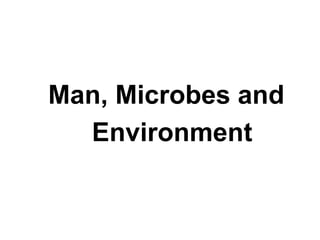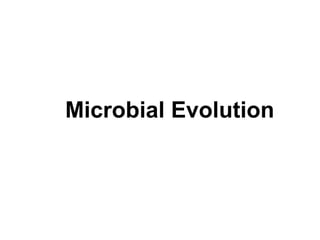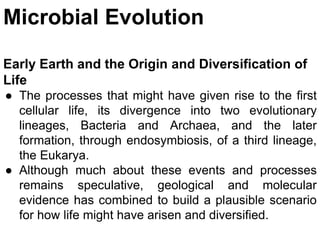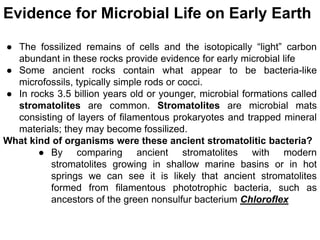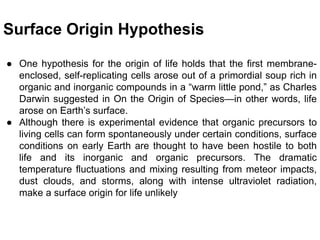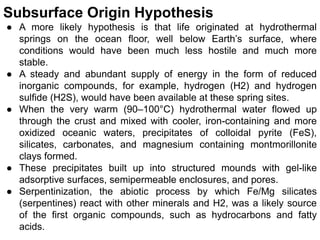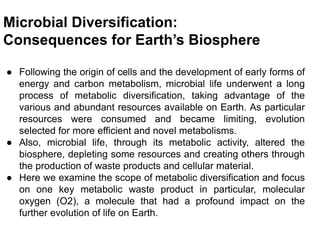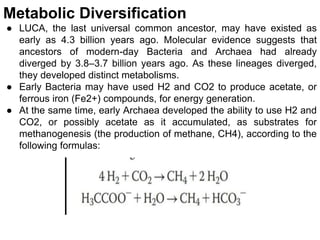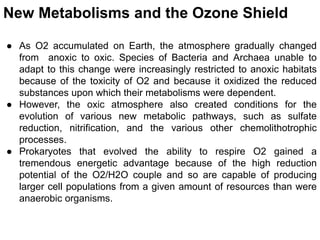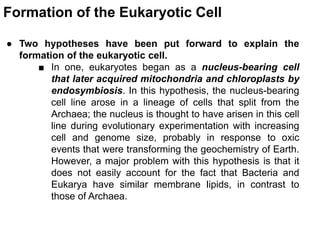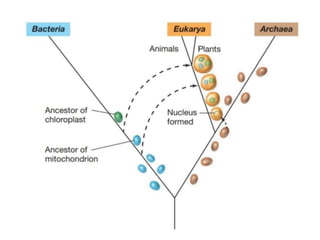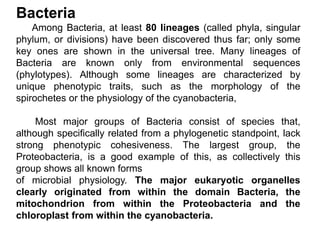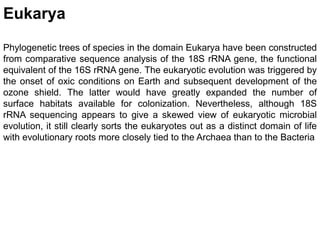This document discusses the evolution of microbial life on Earth from its origins to the development of eukaryotic organisms. It describes how early Earth conditions allowed for the emergence of self-replicating molecules like RNA. Cellular life likely first arose in hydrothermal vents where conditions were stable. Early cells diversified metabolically, with some producing oxygen through photosynthesis. Accumulation of oxygen allowed for aerobic respiration and eukaryotic life, likely arising through endosymbiotic relationships between cells and oxygen-consuming or producing prokaryotes.
